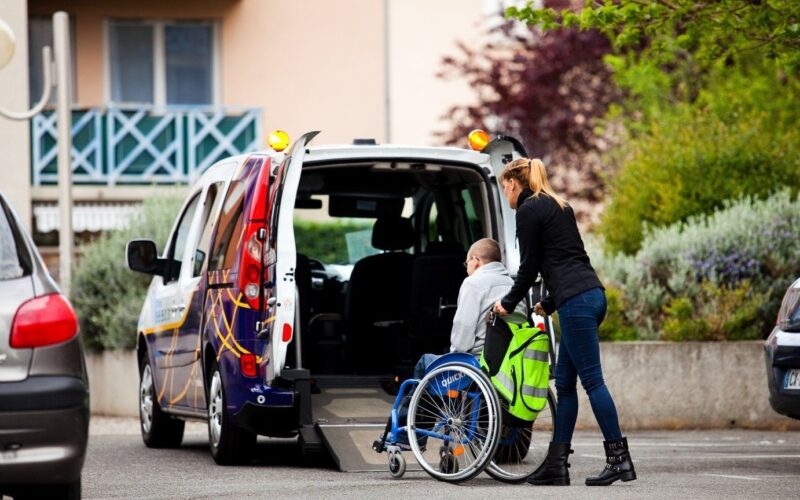The safety of the occupants of a vehicle fitted out for the transport of people using their wheelchair as a seat inside a motor vehicle depends on several conditions:
The motor vehicle must be fitted out following the rules of the art and used for the purpose for which it was approved (approved by the DREAL).
The manufacturer who provides that his wheelchair can be used as a seat by a person in a motor vehicle must submit it to crash tests (standards ISO 717619 and ISO 10542 – fasteners and restraint).
The wheelchair is always positioned in the direction of travel of the vehicle.
The wheelchair must be secured to the motor vehicle using an attachment system claimed by the wheelchair manufacturer, i.e., four designated attachment points: two at the front and two at the rear of the wheelchair (ISO 10542 and NF ISO 7175-19 standards).
People with disabilities / reduced mobility must also have a restraint system on their wheelchair: a lap and chest belt with three anchor points. Warning: The belts incorporated in wheelchairs dedicated to maintaining posture do not constitute a suitable safety device for road transport in a vehicle (unless otherwise specified by the manufacturer).
It is recommended (according to the ISO 7176-19 standard) to use a padded and correctly adjusted headrest on the wheelchair to avoid the risk of “whiplash”: that is to say “to be at 50mm from the wheelchair. The back of the occupant’s head, with the center of the headrest at least at the same height as the rearmost point on the back of the head (the occiput) during normal movement”. Check for vehicle lifts for scooters
The General Operating Rules
The driver activates the vehicle distress signal when a wheelchair user gets on or off the road. (The driver alone who is in a wheelchair is exempt from this obligation.)
And the specific rules for vehicles providing a public passenger transport service:
- Suppose the vehicle is not equipped with an audible announcement device. In that case, the driver must inform the passengers of the destination, the stops, and, if applicable, any event that may affect the journey’s progress.
- Suppose the vehicle is not equipped with a visual announcement device perceptible by all passengers, particularly people with reduced mobility. In that case, the driver must keep a document available to the passengers indicating the destination, the stops, and any necessary information—the smooth running of the trip.

